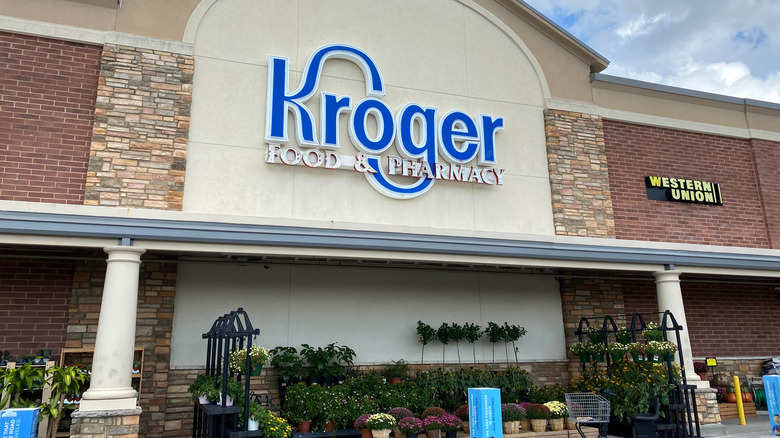How Kroger Got Its Start
Kroger could certainly be considered an American success story. It didn't start out as a large company but has slowly grown to become the largest grocer in the United States with an astounding 2,800 stores. And during that growth, it has continued to evolve and place a focus on selling food at good prices, according to its website. Kroger operates stores with 28 different names, including Mariano's, Metro Market, Pick 'n Save, Gerbes, City Market, and Pay Less Super Markets. These stores operate in 35 states with a continued focus on service, per Kroger.
As part of a rebranding effort that began two years earlier, Kroger unveiled a new logo in 2021, the Fresh Cart logo, which it said was representative of the company's longtime commitment to selling fresh food, according to Supermarket News. As part of its rebranding effort, Kroger created "Kroji" characters (a blending of the words Kroger and emoji) that the company says represent its inclusive principles. The characters appear in commercials and other advertising platforms. Around the same time, Supermarket News reports, a new motto was launched: "Fresh for Everyone."
Throughout its history, Kroger says it has placed emphasis on meeting everyone's needs, which was reflected in the motto of its founder: "Never sell anything you would not want yourself."
It all began with a single store in Cincinnati
It was in 1883 that Barney Kroger decided to take all of the money he had ($372) and use it to fund his dream of opening up a grocery store in downtown Cincinnati, per the company. Britannica says the company's history is a little more complicated. The company was first known as the Great Western Tea Company and operated from 1883 to 1902. In addition to Kroger, B.A. Branagan also owned the business until Kroger bought out Branagan. Kroger then began to grow his line of stores, and then in 1904, he created a bakery and began to supply his four grocery stores, per Britannica. For the next four decades (1902 to 1946), the company was known as Kroger Grocery and Baking Co. before becoming Kroger Co., which remains its name.
In the later part of the 20th century, the company's focus changed to mergers and purchases of competitors. According to the company, in 1983, Kroger merged with Dillon Companies in Kansas to provide its services throughout the USA. To date, Kroger's most significant merger was in 1999 with Fred Meyer, Inc., according to its website, that cost the company $13 billion. Other significant mergers happened from 2001 until 2015, when Kroger combined with Baker's, Harris Teeter, Roundy's, Pock 'N Save, Metro Markets, and Mariano's.
Looking toward the future, Kroger says it remains committed to "service, selection, and value" for its customers.

